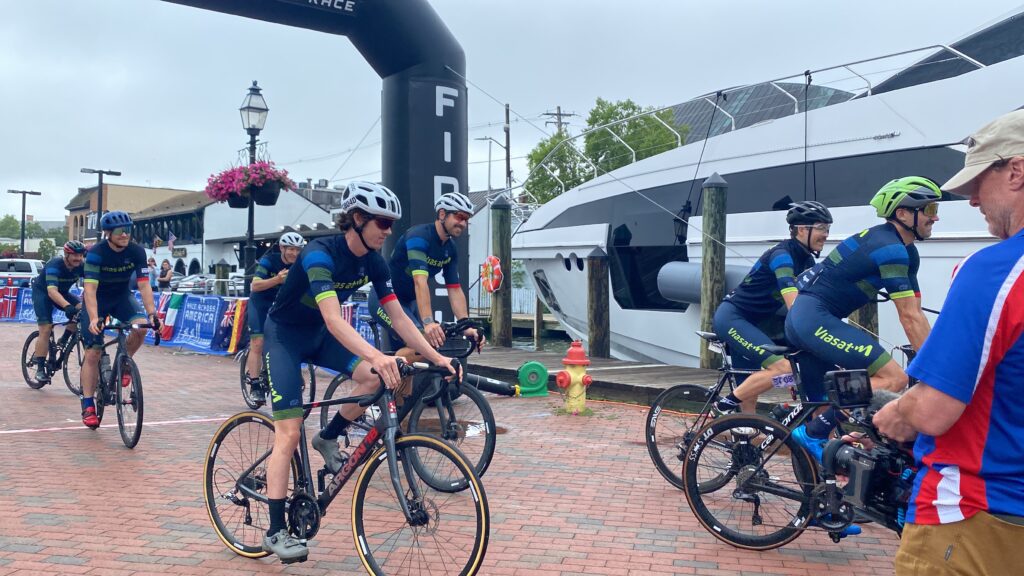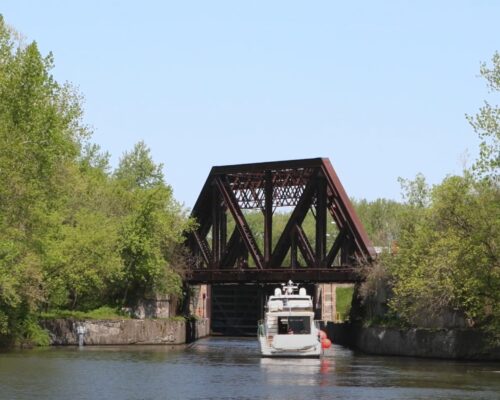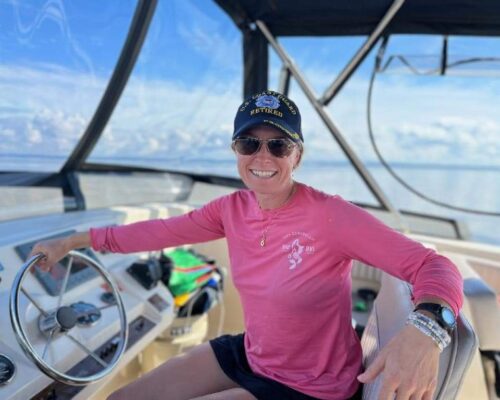In what has been labeled one of the toughest endurance events in the world, cyclists completed their journey from Oceanside, California to City Dock Annapolis for the annual Race Across America (RAAM) with the leaders arriving on Friday and the rest coming in by Monday.
This year, 30 solo racers and 15 teams from 15 countries participated in the ultracycling race, though not all made it to the finish line. Isa Pulver, a cyclist from Switzerland in the 50-59 age category, won the solo race category with a time of 9 days, 12 hours, 16 minutes. She is the first woman to finish the race in fewer than 10 days since the mid-1990s, according to RAAM Director Jeff Magnuson.
“It’s always shocking. We’ll have racers from 16 or 17 countries, we have people following from like 60 to 80 countries. So, it’s always pretty cool to see how many eyeballs are on the race,” RAAM Executive Director Rick Boethling said. “And the better the technology gets, the more we get to bring them into the loop.”
The race began back in 1982 when four men decided to bike across the country as fast as they could and has since grown into a monumental international event raising over $2.5 million a year for charitable causes. Teams and solo racers can ride for their chosen nonprofit or charity.
“When you get down to it, riding your bicycle is a really selfish pursuit,” Boethling said. “So, this kind of reaches beyond ‘Hey, I just want to go out for a bike ride,’ and it’s a pretty cool thing.”
While the racers are conquering about 3,000 miles and 175,000 feet of altitude through 12 states, their assembled crews of around 6-12 people follow along the way to provide crucial support and manage the intense logistic planning. RAAM is 30% longer than the Tour de France, one of the most notorious bike races, and racers do not ride in stages, so they become rather sleep deprived. Boethling has his own crew working with him to ensure the race goes smoothly while already looking ahead to the next year.
Racing as an 8-person corporate team, Team Viasat crossed the ceremonial finish line at City Dock a couple hours after Pulver as the fastest relay team and the only team to finish in fewer than six days. Employees from Viasat, a communications company, have been riding in RAAM for years but had not competed since their win in 2017.
Members from the team had been planning for the race and studying the rules for several months, but once they started pedaling, Tyler Hoffman, the team’s “unofficial captain,” said everything clicked into place. Nobody wanted to let the team down, so through all the physical and mental challenges, everyone motivated each other to keep pushing.
Before working at Viasat, Hoffman hadn’t heard of RAAM. Then he got to see the company’s team win in 2017 and he participated in Race Across the West two years later.
“That was when I realized how special of a race it is because you come together like a band of brothers and sisters and we all I feel like got so much closer over these last five to six days,” Hoffman said.
Race Across the West (RAW) was founded in 2008 as a shorter alternative to RAAM from Oceanside, California to Durango, Colorado. Local Annapolis cyclist Ryan Collins and his teammate Marko Bahlo won RAW this year shattering the record by 2 hours and 20 minutes.
Collins used to participate in shorter races through USA Cycling before the community around ultracycling drew him in. His father competed in RAAM twice, and Collins hopes to find himself racing back to his hometown soon.
“There would be so many people here, just because I’m based here, I mean that would just be overwhelming, just an amazing experience to come home to this grand crowd of just support and friends,” Collins said. “That would be everything.”
The RAAM finish line was not always in Annapolis; it was previously in Atlantic City, New Jersey. Boethling said the finish was moved because Annapolis is more focused on outdoor activity, the city has historic significance, and “it’s a beautiful place to end up.”
“As an Annapolis area resident and advocate and activist and cyclist, it makes me proud to have such an elite world class event finish right here in Annapolis,” said President of Bicycle Advocates for Annapolis and Anne Arundel County Jon Korin.
-Kiersten Hacker




